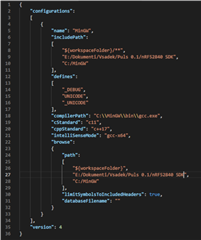



Makefiles were text files, not magically encoded binaries, because that was the Unix ethos: printable, debuggable, understandable stuff. Use of tools that were still wet was part of the culture. It began with an elaborate idea of a dependency analyzer, boiled down to something much simpler, and turned into Make that weekend. As I had spent a part of the previous evening coping with the same disaster on a project I was working on, the idea of a tool to solve it came up.

Make originated with a visit from Steve Johnson (author of yacc, etc.), storming into my office, cursing the Fates that had caused him to waste a morning debugging a correct program (bug had been fixed, file hadn't been compiled, cc *.o was therefore unaffected). įeldman was inspired to write Make by the experience of a coworker in futilely debugging a program of his where the executable was accidentally not being updated with changes:
Makefile vs runjs software#
Feldman received the 2003 ACM Software System Award for the authoring of this widespread tool. It was originally created by Stuart Feldman in April 1976 at Bell Labs. js files together.There are now a number of dependency-tracking build utilities, but Make is one of the most widespread, primarily due to its inclusion in Unix, starting with the PWB/UNIX 1.0, which featured a variety of tools targeting software development tasks. My solution is to just concatenate all the individual.
Makefile vs runjs code#
For example, we may have a dashboard that has loosely coupled components that we want broken down into separate files to make the code more manageable. I like to build JavaScript code as a concatenation of smaller, logically separate. But if your team is comfortable with standard *nix tools, you might find Makefiles for JavaScript to be simple and clean. make comes with its own set of quirks that are often criticised – you must use tabs, filenames can’t contain spaces, and some difficult-to-remember symbols like $^ and Tools like Gulp probably have pretty, colourful outputs too. I’m just documenting my favourite and painless way to build JavaScript files in the standard *nix environment.īefore I say anything, however, I’d like to mention that tools like Gulp and Webpack aren’t entirely unnecessary. Nothing I’m going to say in this post is really revolutionary in any way in fact, using Makefiles to build JavaScript code has probably been done for ages. In case you haven’t figured it out yet, Makefiles and JavaScript are the proverbial hammer and nail in this post.Ī standard *nix environment has an extremely rich set of tools that are often overlooked in favour of new, shiny alternatives such as Gulp or Webpack. But if that hammer is absurdly multi-purposed, there’s nothing wrong with this approach. When all you have is a hammer, everything looks like a nail. Makefiles and JavaScript adhityaa chandrasekar


 0 kommentar(er)
0 kommentar(er)
